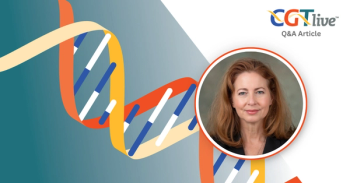
Benefits of Sustained Anti-VEGF Delivery in Wet-AMD
The chief medical officer of Eyevensys discussed the company’s work in developing sustained drug delivery systems.
“We're using electrotransfection to basically induce the ciliary muscle, we're driving plasmids, which have an encoded therapeutic protein on the plasmid, into the ciliary muscle. The ciliary muscle cells will now produce the protein in the eye, and will secrete the protein into the vitreous."
EYS809, a nonviral gene therapy sustained drug-delivery product that delivers anti-vascular endothelial growth factor (VEGF) to the eye, may
EYS809 uses electrotransfection to deliver DNA plasmids rather than viral vectors. This approach may be more advantageous as there is no need for subretinal surgery, easy delivery, and no immunogenicity related to the vector. Dosing can be repeated to extend treatment effect and the relatively unlimited cargo capacity allows for the delivery of 2 therapeutic proteins.
GeneTherapyLive spoke with Ronald Buggage, MD, chief medical officer of Eyevensys, to learn more about how sustained drug delivery could help improve patient care in wet-AMD. He also discussed the electrotransfection process of gene delivery.
Newsletter
Stay at the forefront of cutting-edge science with CGT—your direct line to expert insights, breakthrough data, and real-time coverage of the latest advancements in cell and gene therapy.

















































